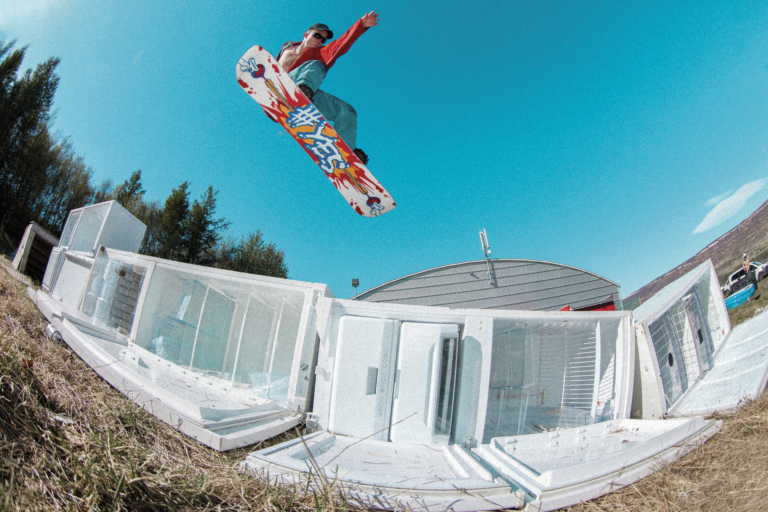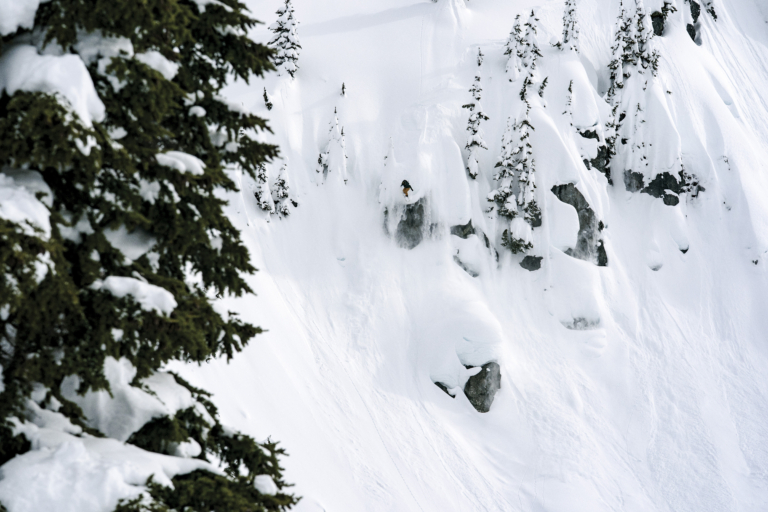A former middle school teacher turned snowboard manufacturer, Nick Gilson’s path into snowboarding is an American-made success story. His humble entry into the industry began in 2013, but following a fire that burned his factory to the ground in 2022. Gilson Snowboards has been passionately guided by an entrepreneurial spirit, scientific mind and desire to reinvent the efficiency of snowboard production, one board at a time. A story of innovation, community and the refusal to conform to the industry’s established norms, here is our interview with the founder!
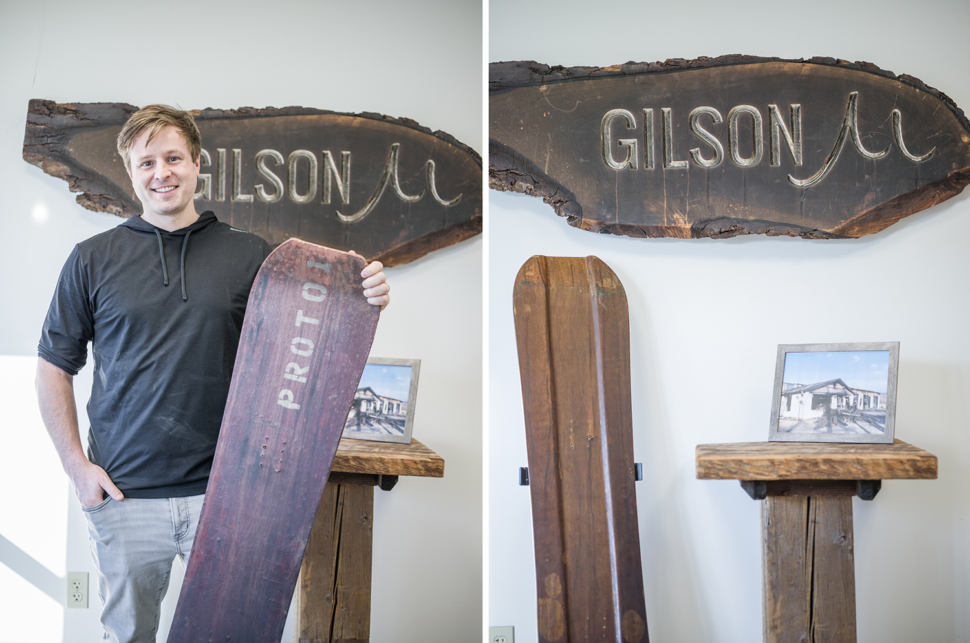
What up, Nick?
Hey Mark, how you doing?
Great, excited to get to know your story.
Thanks! I appreciate it.
So why did you start a snowboard company?
You know, it’s a good question. So, going back to 2013, I was a middle school science teacher with students who came from a pretty wide array of backgrounds and education levels. To get them all engaged, I went back to a project that I was working on when I was my students’ age and started building this hands-on learning environment. There’s no one lesson that could reach all the kids, so I broke up the desks into groups of three and the classroom looked like absolute chaos but we started making some pretty considerable gains and I was seeing the benefits of hands-on learning and project-based learning. But anyways, the project was building my first three-dimensional shaped prototype like the surfboards I made back in the day. Some people start a company because they’ve got a good business model. And then there’s a very different pathway to running a company, which is a little bit more inadvertent. It’s being so carried away and passionate about the subject matter and wanting to be able to continue working on it full-time and dedicating your whole self to it. The company and forming the company sort of just becomes an inevitability to continue the work.
That was certainly the case for Gilson. We just kind of started and then years later we had to be like, “Okay. Shit. I need to figure out a business model around this so that we can keep doing this.” We started with the product and design and passion for the space first (inspired by the classroom projects with the students), then later built the company with the mechanics, process and spreadsheets and all of that.

You and your father were building boats. And you were a lifelong skier growing up as well. So why snowboards specifically?
Growing up, I skied for 13 years and my grandmother was a beautiful skier. My mom felt very strongly that I perfect my skiing before I switched to snowboarding. But at that time, I was already an avid skateboarder and building surfboards. I finally got on a snowboard when I was traveling with a friend and learned the ropes. By the time my mom saw me ride a snowboard, she said, “Alright, never mind, you never have to ski again.”
I’ve always been passionate about snowboards. Thinking back to building sailboats and surfboards, I thought you would never make a flat surfboard or a flat sailboat, right? So I was just thinking about the physical and design principles of liquid H2O and adapting these principles to solid H2O.
Does every boards have a 3D shape to it?
Not anymore. For many years, it was the only thing that we built in our factory. But after the factory fire, our tiny 5,000 sq/ft shop burned to the ground… but it allowed us to expand into a nearly 50,000 square foot factory…with lots more room for activities! When we started, we were really aggressive thinking 3D was a better way to build a snowboard. I’ve really backed off that idea now, knowing some people like 3D while others really love a super technical, fast edge-to-edge, flat base board.
And so in the new factory, we’ve been able to flex our muscles and bring some of the thinking to a flat base… and I’ll say, it’s certainly a lot easier to build a flat base board.
When was the fire?
2022
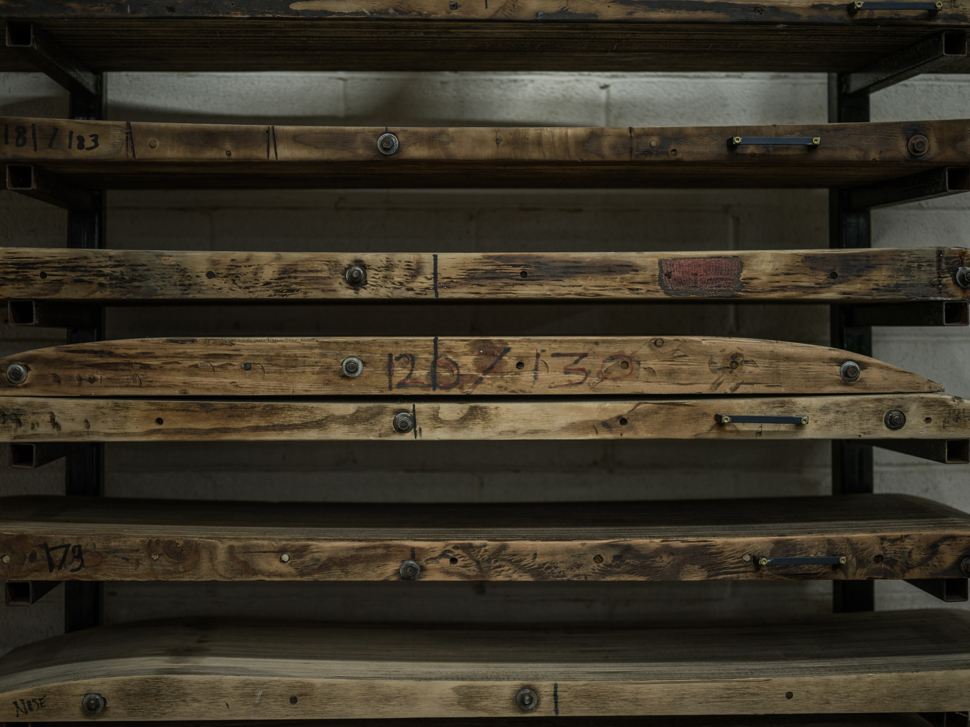
Is that what made you guys transfer from Nashville over to Pennsylvania at that point?
I was a middle school science teacher in Nashville, Tennessee with Austin Royer and we started the company in 2013 with only five prototypes. By that June, we basically moved our prototype equipment from Nashville up to Pennsylvania into a cabin in the woods with no water or electricity that Austin built with his dad when he was in high school. Austin grew up on a dairy farm and when milk prices changed, his dad moved from working in the dairy industry to working in construction. So there’s this donkey and horse stable in the dairy farm that was now only occupied by donkeys and horses instead of this other equipment so we built our first shop in that space during the first year.
Damn, that’s crazy. So, and then what town in PA are you guys located in?
We’re now in a town called Selinsgrove. It’s about 10.8 miles down the road from where our last factory burned down.
How many people do you guys employ at that factory and just throughout the company?
Yeah, we’re a small company. We’re just shy of 30.
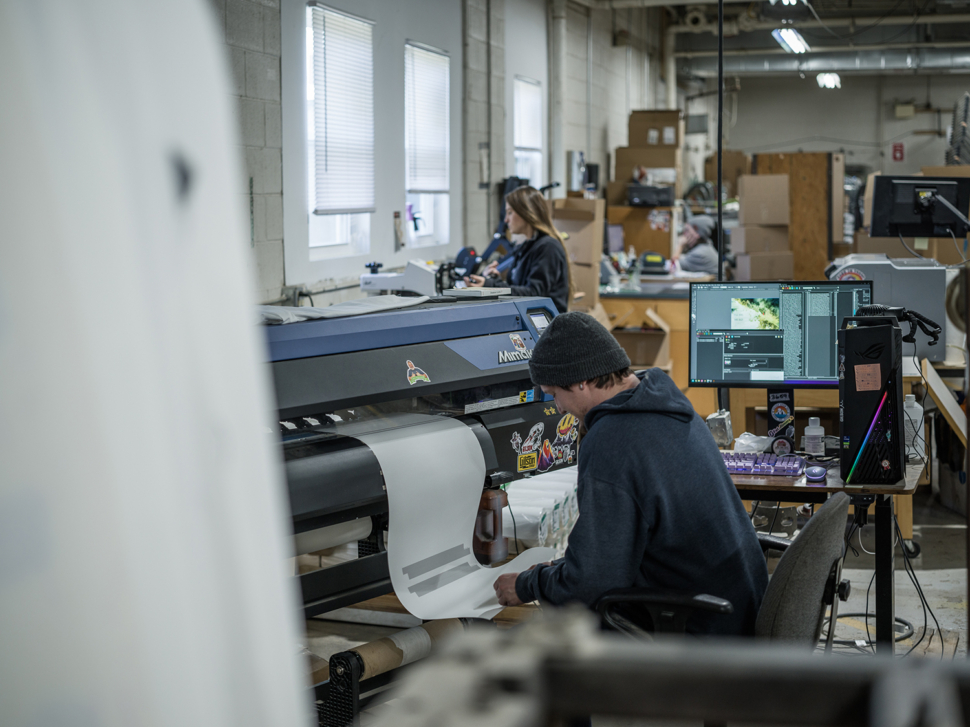
Considering the tariff situation, do you feel that it’s important to make your product in the United States?
You know, that’s a good question. It’s significantly more expensive to manufacture in America but that itself does not necessarily mean it’s better. We didn’t get into this business for the financials. We are truly product-driven. We’re over 90% domestically sourced. We do every single step under our roof. It’s about controlling the manufacturing process, controlling the quality of the product and the raw materials and our supply chain is built incredibly tight and close to home. And that makes it really fun to be able to build direct relationships with snowboarders as opposed to with distributors who know retailers and then retailers who kind of know snowboarders. We get to build for actual human beings instead of warehouse shelves, which really changes what we’re able to do as a company.
Are most of your customers in the United States?
So we’ve shipped to over 50 countries around the world, but I would say that we are vastly US-based in terms of the highest density of shipments.
Besides production costs, are there any other challenges of continuing to produce in America?
You know, that’s a really good question. Our business tends to like predictability or at least like the sense of predictability. Right now we’re feeling confident about what’s happening internally and our customers’ relationship with our product.
The entire supply chain is uncertain and vulnerable at times and things are changing very fast. Looking at the news daily can be challenging because things can shift one way on Tuesday and by Wednesday, they’ve totally shifted again. So that’s hard for our suppliers. I definitely worry sometimes about how those things ripple throughout an incredibly complex supply chain.
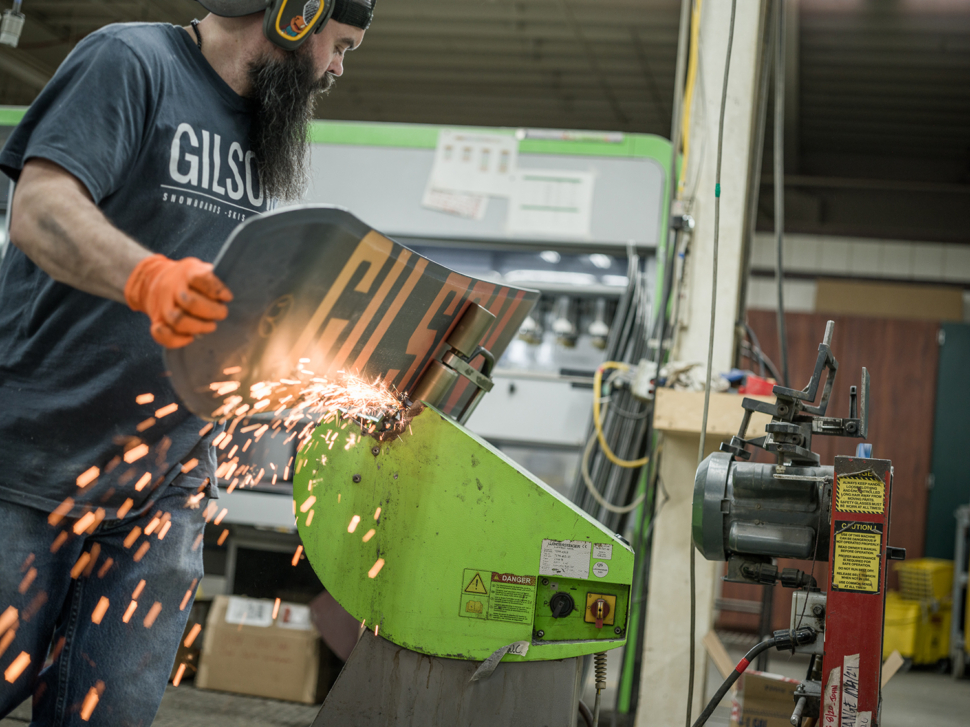
Even though you’re sourcing 90% of materials from the area, how does the current tariff influx mess with your materials?
Yeah, such a good question. It’s really interesting the way the economy works with first, second and third order thinking. Meaning, there are these effects that you don’t necessarily anticipate from the initial change.
For example, we buy all American timber that grows right down the road. It doesn’t have to cross a single border and we don’t even need shipping to bring it to us because we can pick it up on the back of our pickup truck. Let’s say that the business is exporting 30% of its timber to Canada and another 20% to China. That means 50% of their top-line revenue is from export materials.
Secondly, they may be negatively impacted from a cash flow standpoint in terms of the cost of doing business. For example, we just brought in a machine from Valencia, Spain. We had paid for it completely months ago but just had it shipped to us. However, before it even left their facility, we got a new $17,000 shipping bill. The idea is that these new policies are supposed to help small businesses, but it just slaps you in the face.
What was the machinery used for? Is it your own proprietary machine?
Yeah, it is. It’s for a new manufacturing process we’ve invented and been working on over the last three years and then the tariffs changed drastically.

Little hint to like what it does?
It has to do with really high-quality artwork transfer to products while maintaining the structural integrity of the laminate. Historically, it’s taken roughly 12 to 18 months to bring a new design to market, right? This latest innovation brings it down to quite literally minutes. And if you think about snowboards, many companies don’t really change their snowboard designs each year. It is only the artwork that changes. So if last year’s inventory is now overstock, it gets sold at a discount, which decreases value and also leaves money on the table. And it’s a perfectly good snowboard, it just has last year’s artwork. So for us, we don’t want to build for warehouse shelves where there can be overstock and waste, but rather for human beings. How it has been is when a consumer goes into the retail store, they’ve got a limited set of options and might think “that’s my favorite board,” and that’s what they identify with. But you know, if it’s not the right size or proper dimensions, they may end up with the wrong board. I don’t think people should be limited to that set of choices.
A great example of this is @trippydraws. She’s got millions of followers on social media and she’s an amazing artist. She’s a young woman who’s made the courageous decision to pursue her career in the arts so we designed a board together. She came to our facility and brought her audience along for the ride and that afternoon we released it live to her audience and ours. She’s actually tied into the success of her own creation because we share the revenue as opposed to being told, you know, here’s 500 bucks, take a hike.
And because of this machine, instead of saying we’re going to design the snowboard and bring it to market 18 months from now, it can be available now! We just want everybody to get the right model, the right size with the right artwork no matter where they are in the world. And we want to precisely meet that market demand and we want the artist to be making money and riding that rocket ship with us along the way.
It’s almost made to order then, or no?
Yeah, you could essentially say that. We’ve got some stuff staged and basically we’ve built a rapid manufacturing facility here on US soil. This new artwork technology allows us to really speed things up. We can now be delivering artist series snowboards or full customs in days. But I’ll tell you, only 3.75% of our business is full custom. We’ve found that most riders don’t want to build a board from a blank canvas. They want that artwork from Trippy or the artwork from Sesame Street, Transformers… They want it on the right performance model, now.

Is it hard to scale when you guys are picking up your wood in pickup trucks?
Well, yes, but that’s a bit of a dated example. Our wood arrives on the back of an 18-wheeler now at a loading bay. But it’s still only coming from 11 miles down the road.
Any other benefits to running your own factory in America?
Well, the control and being able to keep a really close eye on production is one. The second and arguably even more important is that we get to build for riders instead of warehouse shelves so our lead times are days instead of months or years.
But are you still building a ton of boards heading into this winter?
You got it. We cannot build every order that comes in during peak season, right? The scale is bigger now and we need to be able to run the factory year-round. And then we obviously have a really big peak selling season. But if we were running our competitor’s business model, we’d have to build 100% of what we thought we’d sell ahead of time, put it into distribution and retail, and then just measure the success of the business as a function of sell-through. Instead, we can build 40%, make sure that we have 100% sell-through, and then 60% can be built and fulfilled on the fly, in just a couple of days to people’s doorsteps, making sure that every single person gets exactly what they want.
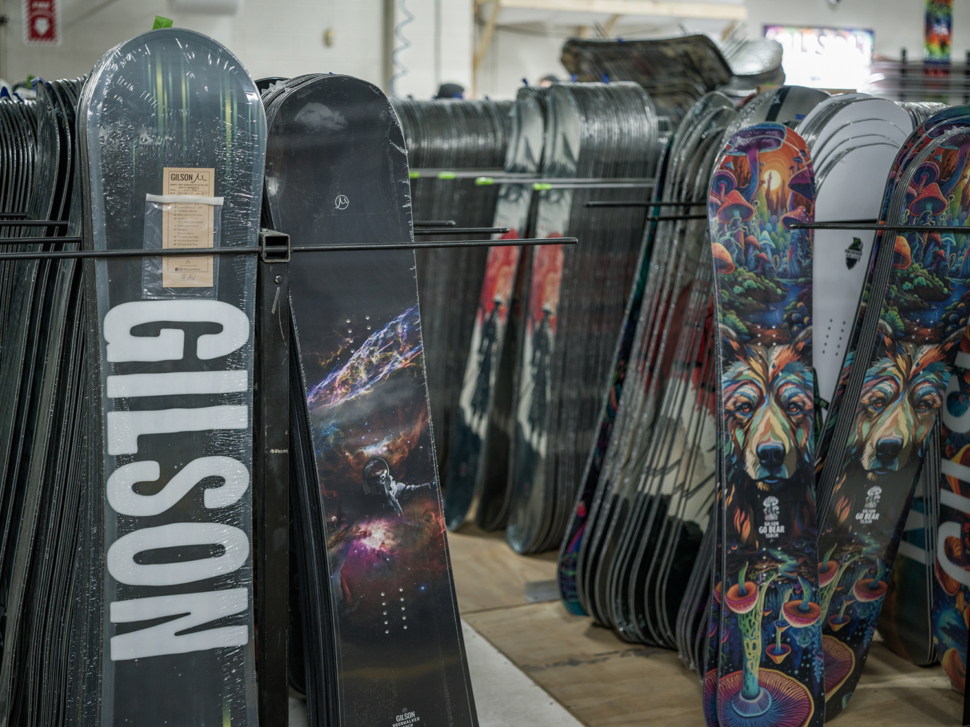
That’s pretty crazy.
We’re the first snow business in this space to achieve scale since the advent of FedEx and the internet.
Nobody else does that?
Nobody else does that. And nobody else actually can do it because we’ve built proprietary systems in-house and we’ve just developed this new technology that really injects us with a shot of steroids in terms of the ability to scale this up. This is a little bit of a future prediction here but imagine that you see Trippy draw a graphic and, absolutely love it, but your mom would kill you if you had mushrooms on your snowboard. Can I make this snowboard with elephants on instead of mushrooms while keeping Trippy’s draws style? Within seconds AI can assist in generating the new artwork. There’s still a human being behind this art and we’ve co-created a one-of-a-kind board.
That’s pretty crazy. So you guys are basically becoming an on-demand snowboard shop.
Yeah, I mean, in many ways. My role is leading this company, I absolutely started with a belief that performance is the distinguishing characteristic. And now I very much understand that performance is actually the price of admission. If you don’t have a high-performing product, you don’t really get to play the game at all. But once you get on the field, it’s not the thing that actually distinguishes you.
How’d you guys get the Sesame Street contract? That’s pretty big.
There’s a few things going on there. One is that a number of the leaders in our company now have toddlers running around at home. So I think that part of it was our own nostalgia. Another part of it comes from the fact that Sesame Street is in a place where they are really open to getting quite a bit edgier than one might expect from what we learned in initial conversations. And so this first launch with them is relatively by-the-book. But I think as you look at an entity that’s got 99% global brand awareness, there’s a large demographic of people who are drawn to Sesame Street.

As you diversified away from only making doing 3D shapes, what is the inspiration behind some of the shapes you have now?
That’s a really great question. So I think surf has been an incredibly important influence in our design from the get go and that’s representative in our 3D designs. But now creating that exact same board as a flat base versus 3D has been a pretty exciting design challenge. We want the same characteristics from one board to the other while changing how the edge engages and interacts with snow.
At the end of the day, we are not here looking for podiums at the Olympics. That’s not at all what our business is about. We’re here for all snowboarders. Riding for fun, hanging out with family and friends on the mountain, maybe having a beer at lunch. Maybe their board leaves the snow, maybe it doesn’t. We’ve just made sure that we have not put disproportionate resources strictly into pro athletes.

What do you think the biggest challenge snowboard brands are currently facing?
Honestly, every company out there has its own set of unique challenges. I think you can point to some things that impact all of us such as changing weather patterns and the threat to our winters and human-driven climate change.
We’re still a small company by all measures. If we are not actively making a series of good decisions all the time, this company will die. It is still at that stage in the company’s development where we’re still feeling very scrappy and hungry for new technology and new ways to go to market to benefit the snowboarders in our community. Our blueprint for the future is to deliver products to customers with artwork that matches their personality. It must be produced utilizing a responsible supply chain on US soil. It must perfectly match demand to eliminate overstock and waste.
That’s awesome. Thank you for your time.
Yeah, absolutely, Mark. Really good to chat with you.

